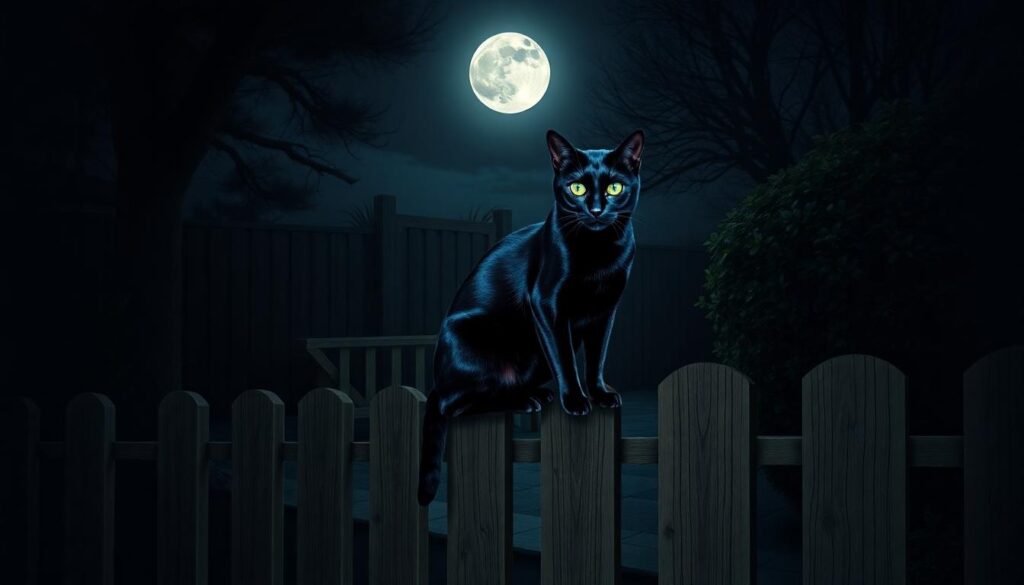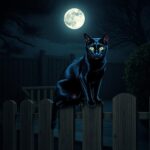Black cats have fascinated us for centuries with their mysterious aura and sleek appearance. These enigmatic felines have inspired countless superstitions, stories, and yes—riddles! Whether you’re looking to add some whimsy to Halloween festivities or simply love brain teasers with a feline twist, black cat riddles offer the perfect blend of mystery and fun.
We’ve collected some of the most entertaining and challenging black cat conundrums for puzzle enthusiasts of all ages. From clever wordplay to tricky logic problems featuring our midnight-colored friends, these riddles will test your wit while celebrating these misunderstood creatures. Ready to put your problem-solving skills to the test with some purr-fectly crafted brain teasers?
10 Mysterious Black Cat Riddles That Will Test Your Wits
- Silent as shadows, I move through the night. My eyes glow yellow in the moonlight. My fur absorbs all colors in sight. What am I?
A black cat, of course! This riddle describes the classic features of these midnight prowlers—their stealthy movement, luminous eyes, and dark fur that seems to vanish in darkness.
- I have nine lives but am not a feline. I bring bad luck when crossed on your path. My fur is darker than midnight. What contradiction am I?
The answer is a common superstition! A black cat doesn’t actually have nine lives, but folklore often attributes this quality while simultaneously claiming they bring misfortune.
- Four paws leave no prints, whiskers sense what’s ahead. I see in darkness where humans dread. My Halloween fame is widespread. Who am I?
A black cat! These adaptive creatures move with remarkable stealth, use their whiskers as sensory tools, and possess superior night vision—all qualities that have made them Halloween icons.
- I purr when pleased but hiss when crossed. My midnight coat shines in the sun. My ancestor was worshipped by pharaohs long gone. What mysterious creature am I?
The riddle refers to a black cat, whose ancestors were indeed venerated in ancient Egypt, where cats were considered divine and harming one was a serious offense.
- Neither witch’s familiar nor harbinger of doom, I simply seek warm laps and sunny rooms. My reputation undeserved, my loyalty true. What misunderstood companion am I?
A black cat! Even though centuries of negative associations, these felines are simply domestic cats seeking the same comfort and affection as their differently colored counterparts.
- I walk on four legs in the morning, two at noon, and three in the evening—yet my coat never changes color. What paradoxical creature am I?
This twist on the famous Sphinx riddle describes a black cat that crawls as a kitten, walks on two legs when standing to reach something, and uses its tail for balance (as a third “leg”) when older.
- Look into my eyes and see golden moons. My voice can charm, my presence intimidates. In ancient times, I was divine; in medieval days, feared. What dual-natured being am I?
A black cat! Throughout history, these animals have been both revered as sacred (in Egypt) and persecuted as demonic (in medieval Europe), showcasing humanity’s conflicting attitudes.
- I’m found in alleys and palaces alike. My name is shared with a precious stone. My luck changes depending on where you live. What cultural chameleon am I?
The answer is a black cat—often called “onyx” for their shiny coats. Interestingly, they’re considered lucky in Japan and parts of Britain but unlucky in much of Western culture.
- I never speak but communicate clearly. I never fly but jump impossible heights. I’m associated with witchcraft yet make perfect pets. What contradictory creature am I?
A black cat embodies these contradictions—they communicate through body language rather than words, can leap several times their height, and even though occult associations, make wonderful companions.
- Born of darkness but full of light, my countenance frightens the superstitious mind. Cross my path at your peril—or so some believe. What misunderstood shadow am I?
The answer is a black cat! Their dark appearance has led to unfounded fears, yet anyone who knows these animals understands they bring light and joy rather than doom to those who welcome them.
The Midnight Prowler: Riddles About Black Cat Movements
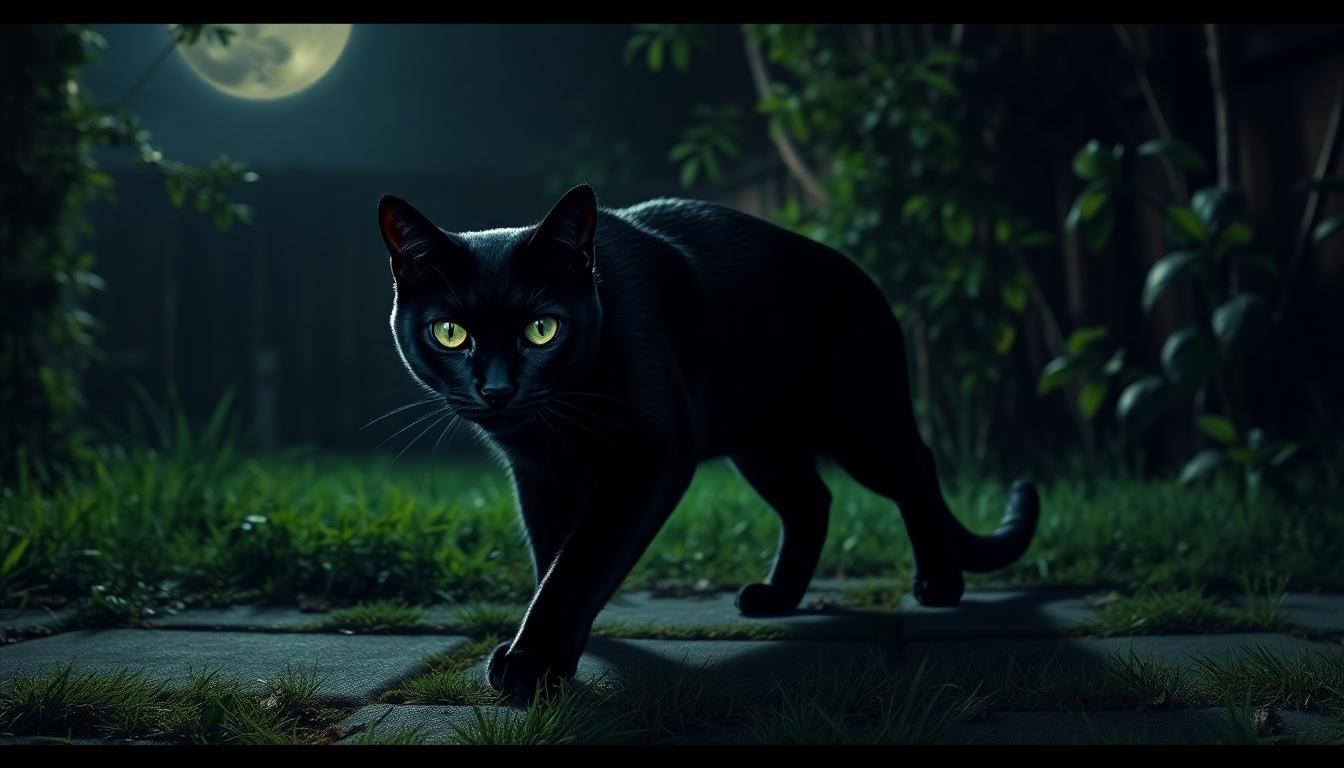
Black cats are masters of stealth and nighttime navigation, making them perfect subjects for challenging riddles. These puzzles capture the essence of their silent movements and uncanny ability to navigate in darkness.
Stealth and Silence Puzzles
Black cats are renowned for their ability to move without making a sound, a trait that inspires some of the most intriguing riddles. Consider this classic teaser: “What is faster, the sound of a black cat sneaking up or the sound of its prey running away?” The answer reveals the cat’s hunting prowess: “The sound of its prey running away, because by the time you hear it, the cat has already caught you.” This riddle perfectly captures the silent stalking ability that makes black cats such efficient predators.
Another puzzle plays on the cat’s shadowy appearance: “What does a black cat turn into when it crosses a moonlit road?” The answer is simply “A darker shadow,” highlighting how these felines can seemingly disappear into the darkness around them. Their ability to blend with shadows makes them particularly mysterious creatures, especially when prowling at night.
Nighttime Navigation Teasers
Black cats possess an almost supernatural ability to find their way in complete darkness, which serves as inspiration for many riddles. One popular teaser asks: “How does a black cat always find its way home in the dark?” The answer demonstrates their remarkable memory: “Because it follows the same path it took when the sun was out.” This showcases the impressive spatial awareness these animals maintain regardless of lighting conditions.
Another captivating riddle questions: “How does a black cat use the moon to find its way?” The solution – “By following the shadows that lead it home” – highlights their innate ability to use subtle environmental cues for navigation. Their heightened senses also feature in the puzzle “What guides a black cat through the darkest night?” with the answer being “Its keen sense of hearing and smell.” These riddles celebrate the remarkable adaptations that allow black cats to move confidently through their nighttime industry.
Shadow Companions: Black Cat Personality Riddles
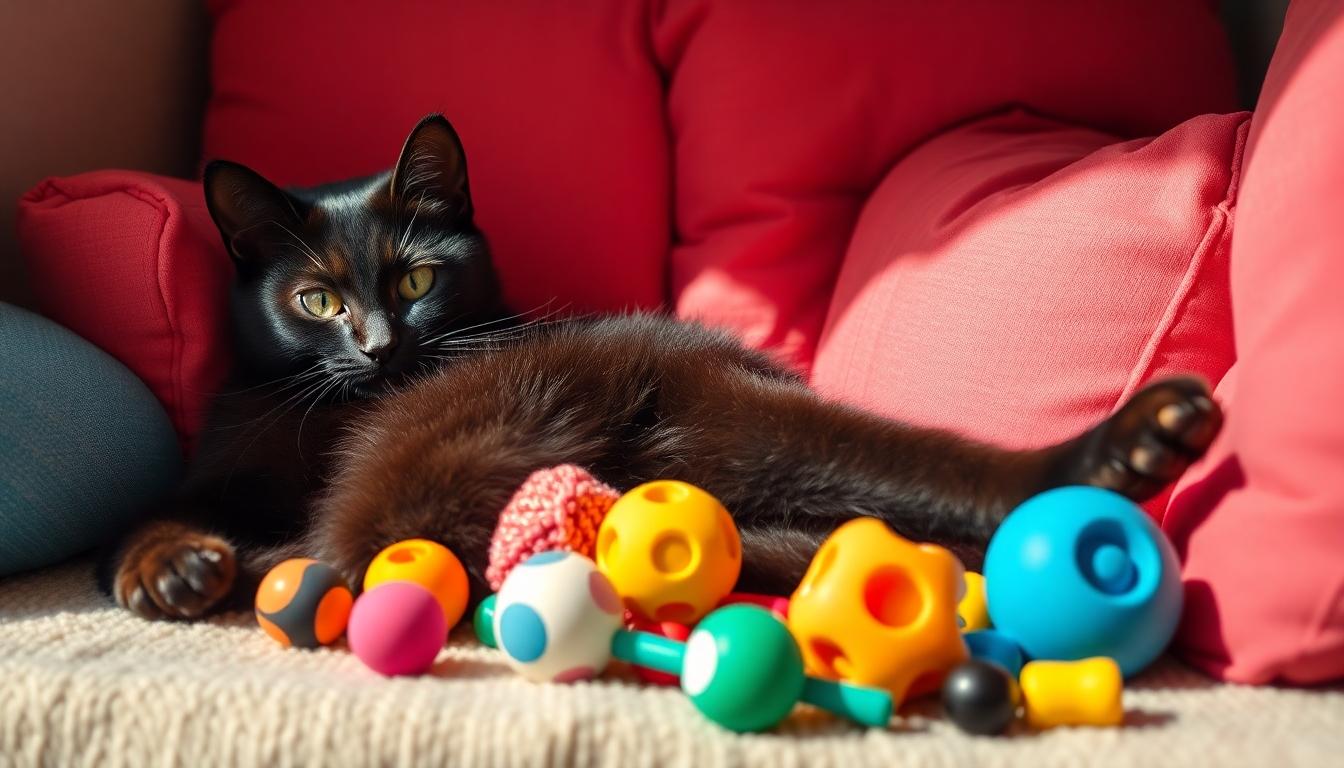
Black cats have long been known for their distinctive personalities, combining mystery with charm. These riddles explore the unique character traits that make these feline friends so captivating.
- Riddle: Why did the black cat start painting?
Answer: Express your personality! - Riddle: What is the black cat’s favorite tool?
Answer: The Present! - Riddle: There was a black cat lying on a black tar road, with its eyes down, and no street lamps on. A black car swerved around it. How did the driver know it was there?
Answer: This classic riddle plays on the black cat’s legendary ability to blend into darkness while testing your problem-solving skills.
Curious Nature Brain Teasers
Black cats possess an innate curiosity that makes them perfect subjects for brain teasers. Their exploratory nature drives them to investigate every corner of their environment.
- Brain Teaser: What is something that a black cat might enjoy doing that involves mystery and exploration?
Answer: Exploring dark spaces or hidden areas. - Brain Teaser: If a black cat could solve any problem, what would it be?
Answer: Uncovering a hidden treasure.
These brain teasers highlight the investigative spirit of black cats, who never seem to tire of discovering new spaces and objects within their territory. Their curious personalities make them fascinating companions who constantly surprise their human friends with their intelligence and problem-solving abilities.
Independent Spirit Mind Benders
The independence of black cats is legendary, providing rich material for mind-bending riddles. Their self-reliant nature sets them apart from other pets.
- Mind Bender: If a black cat can be seen as a symbol of independence, what does this say about its personality?
Answer: It suggests that black cats are often perceived as having strong, self-reliant personalities. - Mind Bender: How might a black cat’s independent nature influence its behavior?
Answer: It could lead to more exploratory and solitary behavior.
Black cats often march to the beat of their own drum, making decisions based on their own interests rather than seeking constant approval. This independent streak manifests in their tendency to create their own schedules and rules, sometimes appearing aloof while actually demonstrating their confidence and self-sufficiency.
Whiskers and Wonder: Physical Feature Riddles
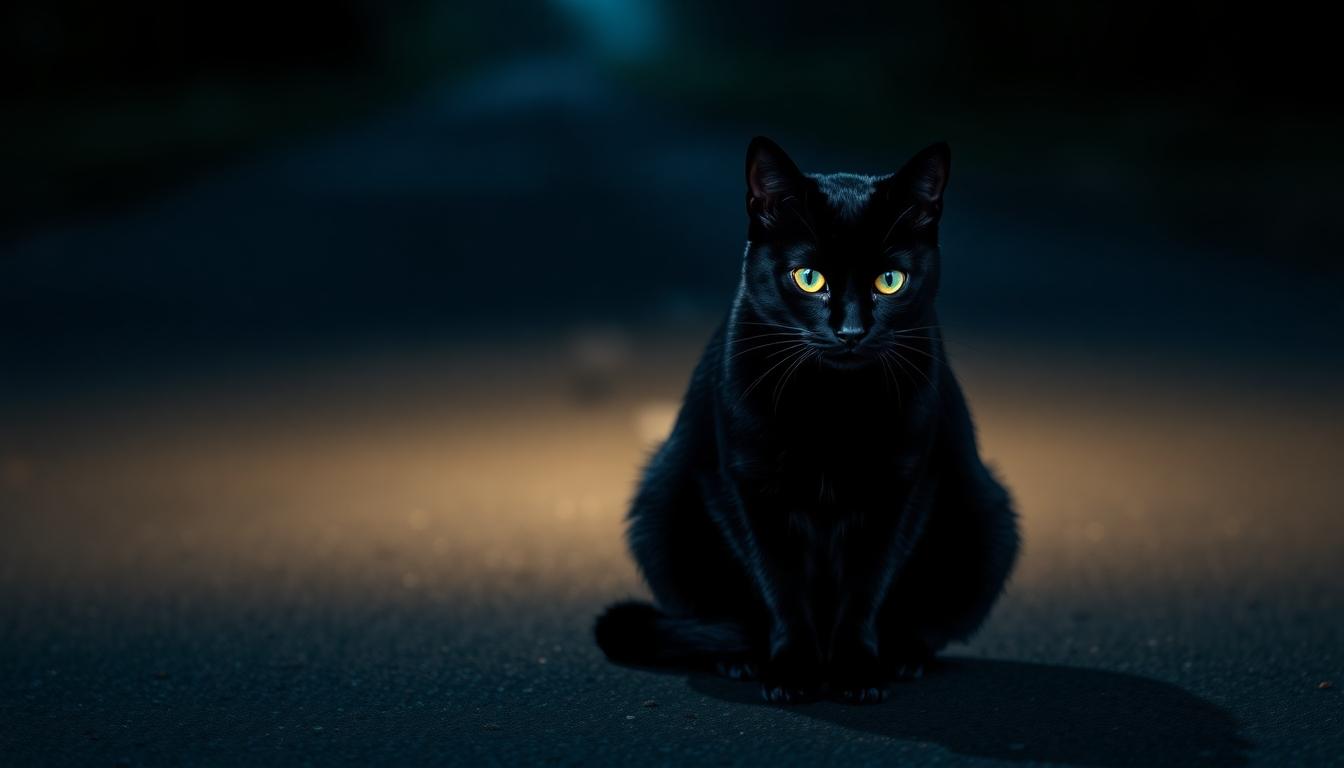
Black cats possess distinctive physical features that inspire intriguing riddles. From their sleek silhouettes to their mysterious whiskers, these attributes form the basis for creative wordplay and challenging brainteasers.
Eyes That Glow Conundrums
The captivating glow of a black cat’s eyes creates perfect material for perplexing riddles. Their eyes contain a reflective layer called the tapetum lucidum, which produces that signature luminescence in darkness. This unique feature appears in subtle ways throughout cat-themed puzzles. One particularly clever riddle involves a black cat on a dark road with “eyes down,” suggesting that without those glowing eyes, drivers must rely on other awareness cues to spot the feline. The contrast between their glowing eyes and their dark surroundings makes for especially challenging riddles that play with concepts of visibility and perception.
Sleek Fur Mysteries
The glossy black coat of these felines serves as a central element in many mysterious riddles. Their sleek fur enables stealthy movements, which riddle-makers frequently incorporate into their puzzles. A popular example plays on this stealth factor: “When is it bad luck to see a black cat? When you’re a mouse.” This riddle cleverly emphasizes the predatory advantage their dark fur provides as natural camouflage. Another humorous riddle places a black cat at a computer to “track the mouse,” using wordplay that connects their fur color with hunting instincts. These riddles consistently employ cultural tropes about black cats while focusing on sensory imagery related to darkness and stealth. The glossy coat becomes more than just a physical feature—it transforms into a symbol of mystery within these clever wordplays.
Magical Meows: Supernatural Black Cat Riddles
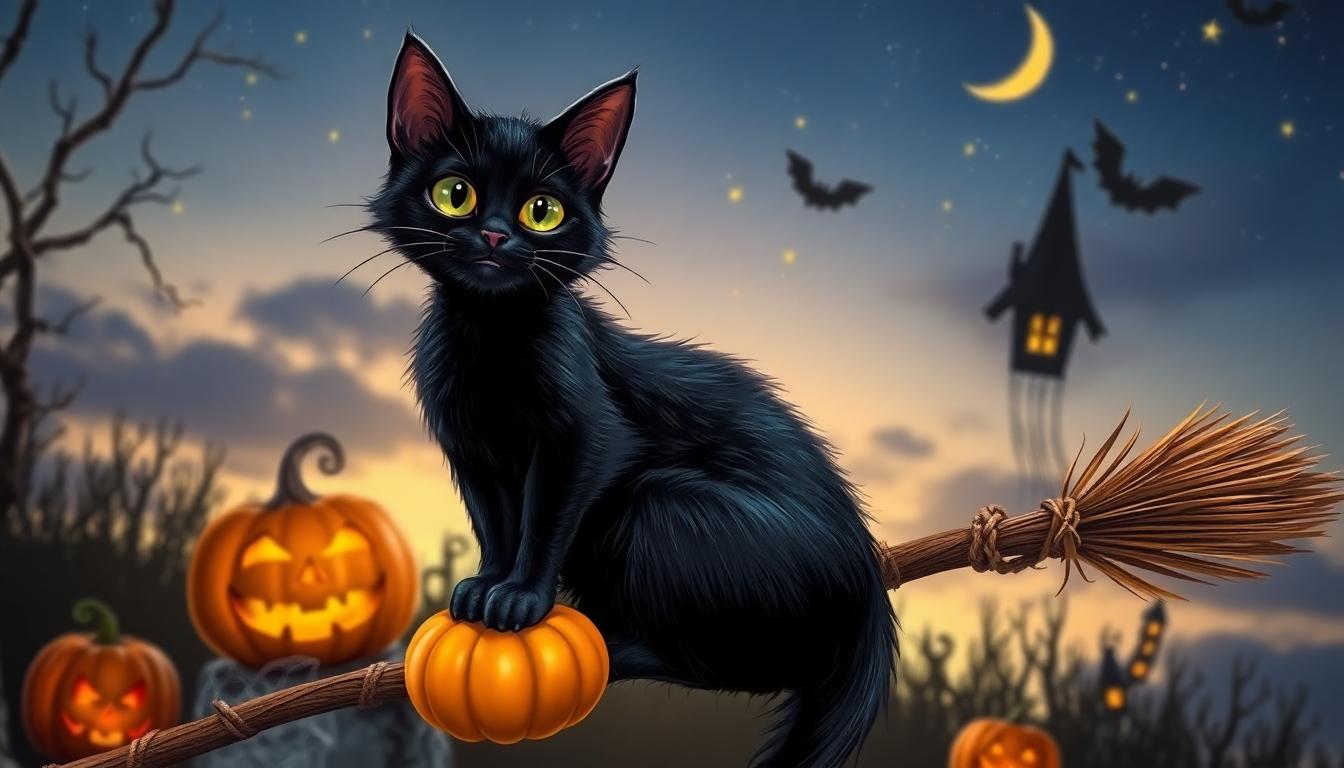
Black cats have long been associated with mystery and supernatural elements, making them perfect subjects for mind-bending riddles. These enigmatic felines inspire clever wordplay and puzzling questions that challenge both children and adults alike. Here are some supernatural black cat riddles that showcase their mystical charm:
- Why was the black cat sad?
Answer: Because it was having a purr-manent frown.
- What did the black cat say when it was happy?
Answer: I’m paws-itive everything will be fine.
Luck and Fortune Enigmas
Black cats hold contradictory positions in folklore worldwide, being symbols of both good and bad luck depending on the culture. These fortune-based riddles play on these fascinating superstitions:
- Why is the black cat considered lucky in some cultures?
Answer: Because it’s thought to bring good fortune or ward off bad luck.
- What crosses your path but doesn’t move?
Answer: A black cat in a painting.
- When does meeting a black cat double your fortune?
Answer: When you’re a cat lover looking to adopt.
Halloween Connection Puzzles
The association between black cats and Halloween runs deep, creating a rich source of spooky season riddles. These puzzles capitalize on the eerie reputation these felines have acquired through centuries of folklore:
- Where might a black cat be seen on Halloween?
Answer: Often depicted near witches or in spooky settings.
- What has four paws, a witch’s hat, and brings both chills and smiles on October 31st?
Answer: A black cat in Halloween decorations.
- Why do black cats make excellent Halloween DJs?
Answer: Because they’re naturally good at supernatural sound effects and have purr-fect timing.
Historical Whispers: Ancient Black Cat Riddle Traditions
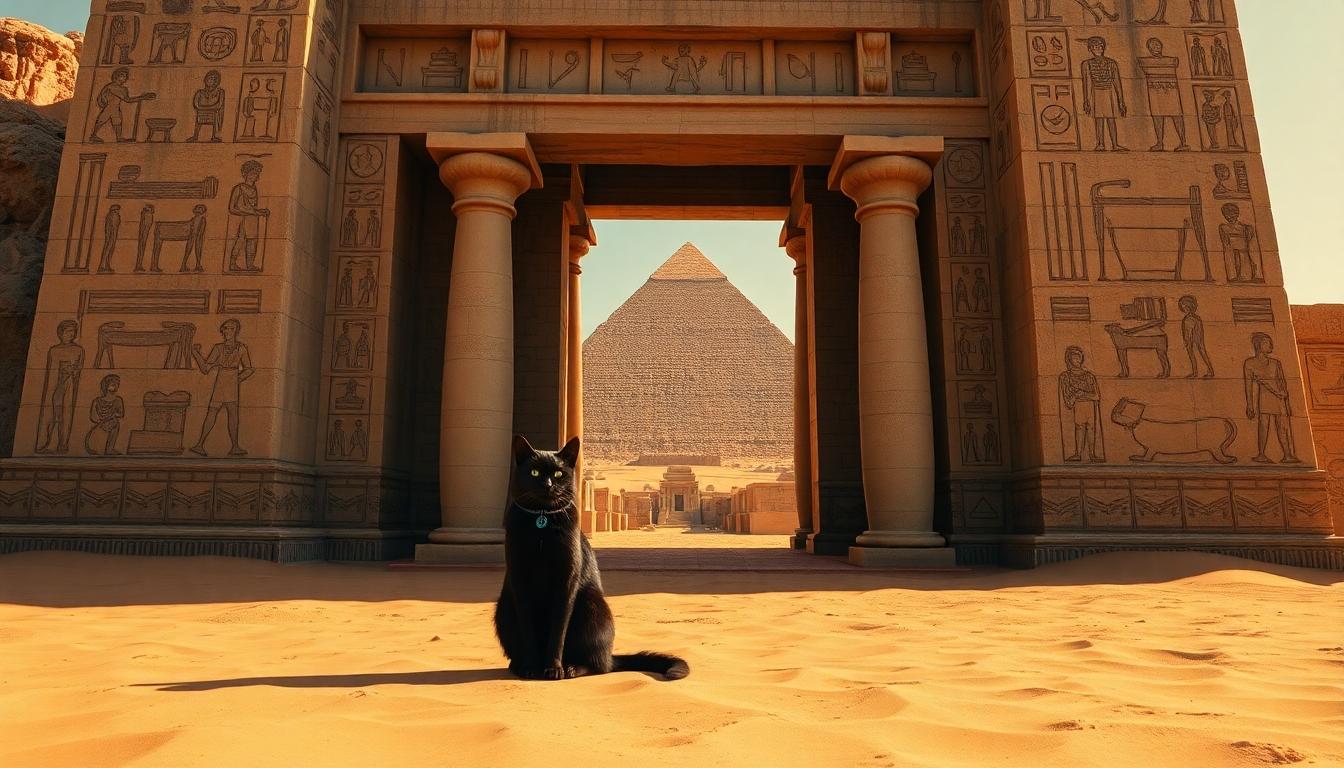
Throughout history, black cats have prowled the boundaries between reverence and fear, inspiring countless myths and legends. While few exact ancient riddles about these mysterious felines have survived to the present day, their cultural significance provides fascinating insights into how our ancestors viewed these enigmatic creatures.
Egyptian Worship Riddles
Ancient Egyptians held cats in the highest esteem, with black cats occupying a special place in their pantheon of venerated animals. Cats were deeply embedded in Egyptian mythology, where the goddess Bastet often appeared in feline form, protecting homes and bringing good fortune. Archaeological evidence shows Egyptians mummified their beloved feline companions and imposed harsh penalties on anyone who harmed them. Though no formal riddles about black cats from this period have been preserved in historical records, the symbolic language surrounding these animals suggests they were often used in metaphorical speech and possibly in forgotten word games. The reverence for black cats in Egyptian culture stands in stark contrast to later superstitions, demonstrating how cultural perceptions of these animals have dramatically shifted over millennia.
Medieval Mystery Teasers
The Middle Ages marked a dramatic turning point in the reputation of black cats throughout Europe. These once-revered creatures became associated with witchcraft, dark magic, and ill omens. Black cats were frequently depicted as “familiars” to witches, believed to assist in casting spells and communicating with dark forces. This period gave rise to many folk tales and superstitions surrounding black cats crossing one’s path. While exact documented riddles from medieval times are scarce, the cultural atmosphere undoubtedly inspired riddling traditions that played on people’s fears and superstitions. Medieval storytellers likely crafted verbal puzzles featuring black cats as symbols of mystery and the unknown, using their dark reputation to create tension and intrigue in their tales. The association with Greek goddess Hecate, who ruled over magic and witchcraft, further cemented the black cat’s position as a creature of supernatural significance during this groundbreaking period.
Solving The Midnight Mystery: Tips For Cracking Black Cat Riddles
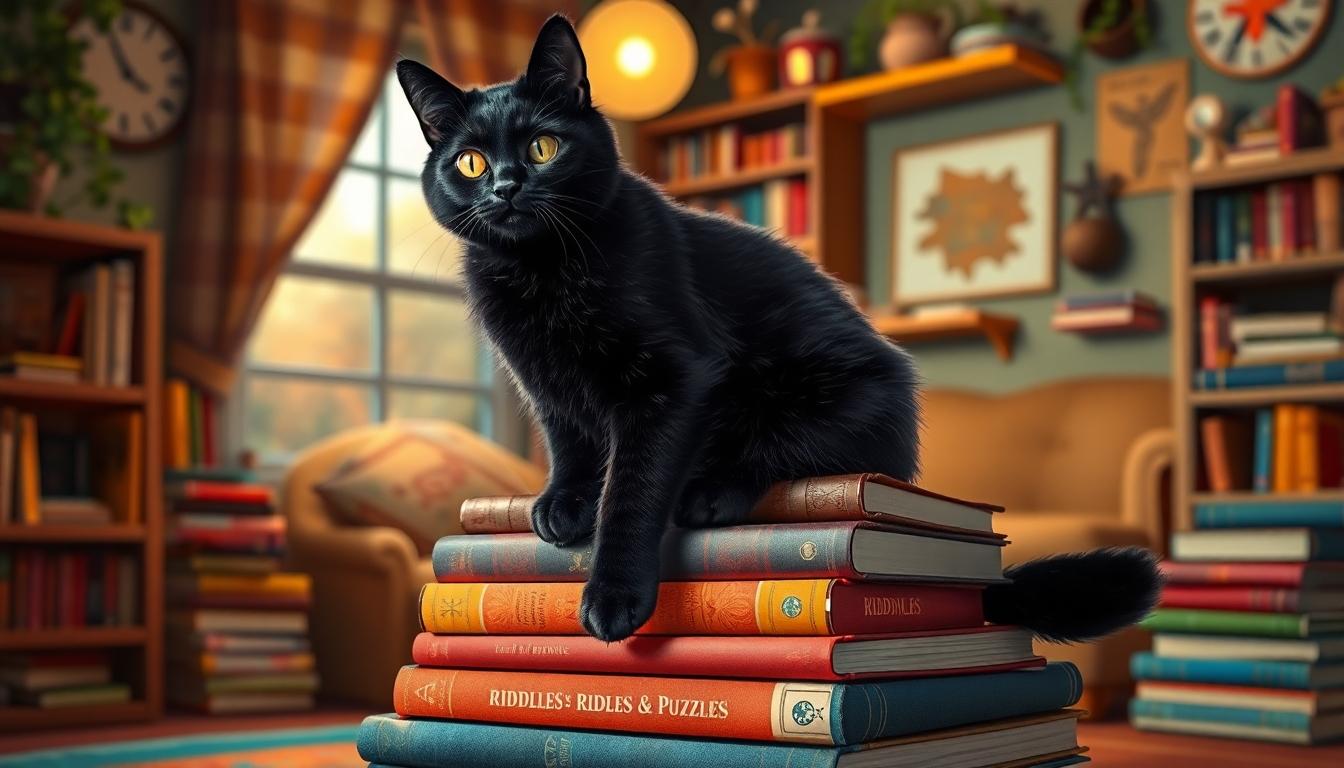
Black cat riddles often require exact strategies to unlock their clever answers. We’ve gathered essential techniques to help you navigate these feline-themed brain teasers with confidence.
Understand the Context
Context provides crucial clues in black cat riddles. Pay close attention to every detail mentioned in the setup, as seemingly insignificant information might hold the key to solving the puzzle. For example, in the classic riddle “When is it bad luck to see a black cat?” the answer (“When you’re a mouse”) hinges entirely on understanding the predator-prey relationship context rather than superstition.
Look for Wordplay and Puns
Many black cat riddles rely heavily on clever wordplay. Search for double meanings, homonyms, and puns within the riddle text. The riddle “What do you get when you cross a black cat and a lemon?” delivers its punchline “A sour puss” through a play on words connecting cats (puss) with sourness (lemons).
Consider Multiple Perspectives
Thinking outside the conventional box often leads to breakthrough answers. Black cat riddles frequently involve unexpected twists that require shifting your perspective. The famous “Black Cat Situation Puzzle” about a driver avoiding a black cat even though non-working headlights seems impossible until you consider alternative explanations – perhaps it’s daytime, or maybe the cat isn’t alive.
Examine Common Black Cat Associations
Black cats come with rich cultural associations that frequently appear in riddles. Their connection to luck (both good and bad), Halloween, witchcraft, stealth, and nighttime activities often form the foundation of many puzzles. When faced with a challenging black cat riddle, consider whether these traditional associations might guide you toward the answer.
Combine Logic with Creativity
The most challenging black cat riddles require both logical reasoning and creative thinking. Analytical skills help you process the information provided, while creativity allows you to make unexpected connections. The riddle “What do you call a smart black cat?” has the answer “Meow-awesome thinker” – combining cat sounds with human intelligence characteristics in a playful way.
Practice Pattern Recognition
Regular exposure to black cat riddles helps you recognize common patterns and tricks. Many riddles follow similar structures or use familiar misdirection techniques. By solving many puzzles, you’ll develop an intuitive sense for approaching new ones, making you a more efficient riddle solver.
Purr-fect Puzzlers: Creating Your Own Black Cat Riddles
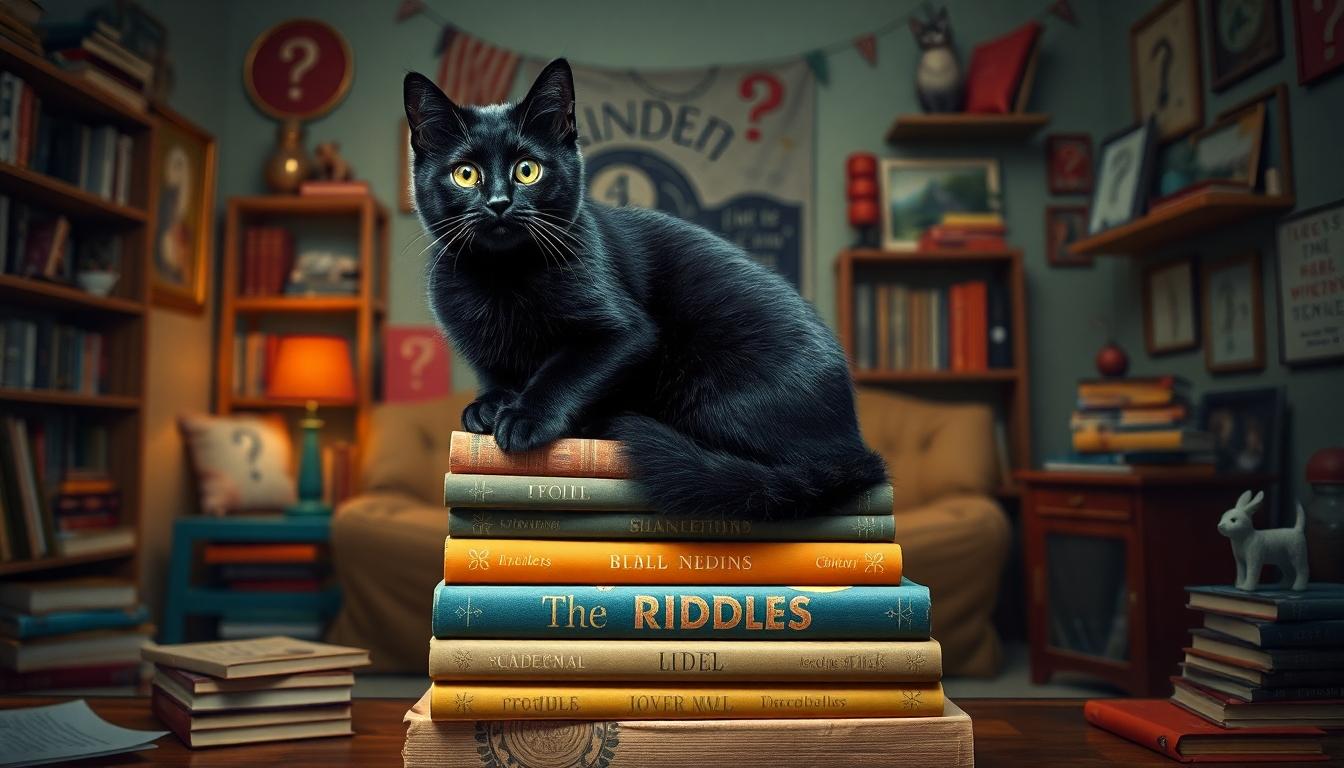
Crafting your own black cat riddles isn’t as mysterious as these feline friends themselves. We’ve gathered expert techniques to help you create captivating puzzles that capture the essence of these enigmatic creatures. Following these simple steps will transform you into a riddle master in no time.
Start with Wordplay and Puns
Wordplay forms the backbone of memorable black cat riddles. Begin by listing cat-related terms like “meow,” “paws,” or “purr” that can double as other words or sounds. For example, “What do black cats serve at parties? Mew-lk and cookies!” This riddle uses the similarity between “milk” and “meow” to create a playful pun that’s both clever and cat-themed.
Incorporate Cultural References
Black cats come with rich cultural associations that provide fertile ground for riddle creation. Luck-based questions work particularly well when you add unexpected twists. Try crafting riddles like “When does a black cat bring good luck? When it chases away a ghost!” This type of riddle acknowledges the superstition while subverting it with a surprising answer.
Use Sensory Imagery
Effective black cat riddles often employ vivid sensory details, especially relating to darkness or stealth. Create visual paradoxes by placing black cats in challenging settings: “What’s harder to see than a black cat in a coal mine? A black cat with its eyes closed.” These riddles engage the imagination and highlight the cat’s natural camouflage abilities.
Focus on Behavior and Characteristics
Black cat behavior offers many riddle opportunities. Their hunting prowess, independence, and curious nature make for captivating puzzle material. Consider this example: “Why was the black cat sitting at the computer? To track the mouse.” This riddle cleverly connects feline hunting behavior with computer terminology.
Keep It Brief and Rhythmic
The most memorable black cat riddles use minimal, rhythmic phrasing. Short questions with punchy answers tend to stick in people’s minds. Aim for riddles that flow naturally when spoken aloud and deliver satisfying punchlines. The structure “Why did the black cat…? Because…” often works well for beginner riddle creators.
Subvert Stereotypes
Challenge the common “bad luck” trope by shifting perspective in your riddles. Create puzzles like “When is it bad luck to see a black cat? When you’re a mouse.” This approach acknowledges the superstition while cleverly changing the point of view, adding both humor and a fresh take on an old belief.
| Riddle Type | Template | Example |
|---|---|---|
| Luck-themed | When is a black cat [good/bad]? | When does a black cat bring good luck? When it helps you find lost things in the dark! |
| Behavior-based | Why did the black cat [action]? | Why did the black cat join a band? To play the meow-sic! |
| Visual | What’s harder to see than [black cat scenario]? | What’s harder to see than a black cat at midnight? Its shadow! |
The Lasting Charm of Black Cat Riddles in Modern Culture
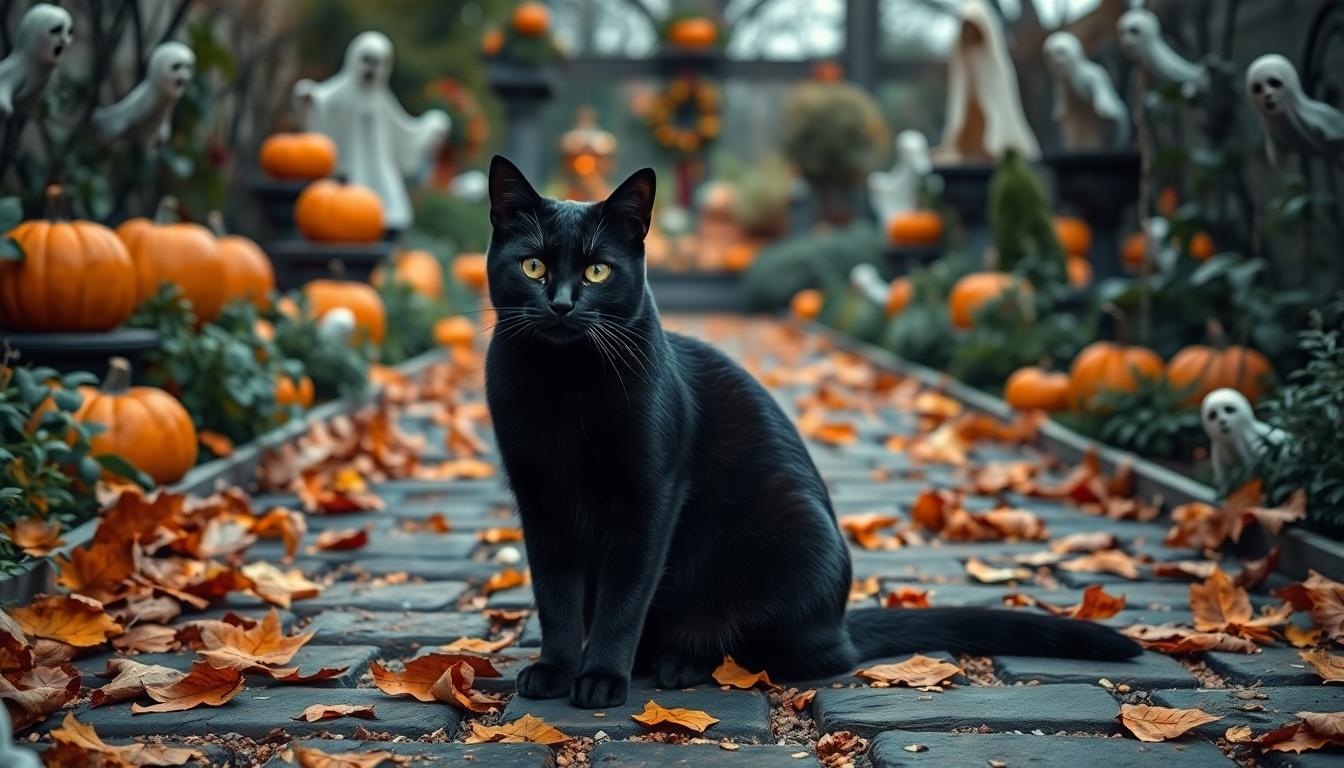
Introduction to Black Cat Riddles
Black cat riddles continue to captivate our imagination even though their limited documentation in historical texts. These enigmatic puzzles draw from the rich tapestry of folklore surrounding these midnight-colored felines. Throughout generations, the mysterious nature of black cats has inspired creative wordplay and brain teasers that challenge puzzle enthusiasts of all ages.
Cultural Significance of Black Cats
Black cats hold dramatically different symbolic meanings across various cultures, directly influencing the riddles created about them. In Welsh, Scottish, and Japanese traditions, these ebony felines represent good fortune and positive omens, as noted by the Carnegie Museum of Natural History. Conversely, Western European folklore often portrays them as harbingers of misfortune due to their historical connection to witchcraft. This duality creates a perfect tension for crafting riddles that play with contradictory symbolism.
The ancient Greeks first established the mystical connection between black cats and the supernatural when they associated these animals with Hecate, the goddess of magic and sorcery. During the Middle Ages and Salem witch trials, black cats were believed to be “familiars” for witches, further cementing their reputation as magical creatures. These historical beliefs provide rich material for riddles that explore themes of mystery, transformation, and hidden knowledge.
Modern Cultural Presence
Today’s pop culture continues to embrace black cats as symbols of the enigmatic and unknown. Television shows, films, literature, and social media frequently feature these sleek creatures in contexts that emphasize their mystique. Modern black cat riddles often incorporate contemporary references while maintaining their connection to age-old symbolism. Digital platforms have revitalized interest in these traditional puzzles, allowing them to reach new audiences who appreciate their blend of history, superstition, and clever wordplay.
Black cat riddles remain popular during Halloween festivities, where their association with the supernatural peaks annually. Many family-friendly Halloween activities include riddles featuring black cats alongside witches, ghosts, and other spooky symbols. This seasonal surge in popularity helps preserve the tradition of black cat riddles for future generations, ensuring their lasting charm in our cultural consciousness.
Why We’re Captivated By Black Cat Riddles: A Feline Conclusion
The enduring appeal of black cat riddles lies in their perfect blend of mystery mystery and playfulness. These puzzles capture the duality that makes these ebony felines so fascinating – their silent grace paired with their bold personalities.
Whether you’re solving riddles about their glowing eyes or creating your own puzzles about their midnight adventures we hope you’ve gained a new appreciation for these misunderstood creatures. Black cat riddles aren’t just brain teasers – they’re celebrations of these complex companions who’ve padded through human history leaving distinctive paw prints on our collective imagination.
Next time you encounter a black cat don’t just admire its sleek form – remember there’s a industry of riddles and wonder wrapped in that inky coat.
Frequently Asked Questions
What makes black cat riddles unique?
Black cat riddles are distinctive because they combine the mysterious nature of these felines with clever wordplay and logic puzzles. They draw on the rich cultural history and contradictory perceptions of black cats—from bad luck omens to revered deities—creating brain teasers that are both challenging and culturally significant. Their uniqueness comes from incorporating elements of stealth, nighttime navigation, and supernatural associations that are specifically attributed to black cats.
Why are black cats associated with superstitions?
Black cats’ superstitious associations date back to the Middle Ages when they became linked to witchcraft and dark magic. Their ability to move silently in darkness and their glowing eyes created an aura of mystery that fueled negative perceptions. While they were worshipped in ancient Egypt, European medieval culture transformed them into symbols of bad luck. These contradictory cultural attitudes have persisted for centuries, making black cats among the most supernaturally charged animals in folklore.
How did ancient Egyptians view black cats?
Ancient Egyptians revered black cats as sacred animals associated with the goddess Bastet, who represented protection, fertility, and maternal care. Unlike later European traditions, Egyptians considered black cats to be harbingers of good fortune and divine protection. They were so highly respected that killing a cat—even accidentally—was punishable by death. This positive reverence stands in stark contrast to the negative associations that developed during the European Middle Ages.
What physical features of black cats inspire riddles?
The most riddle-inspiring physical features include their glowing eyes (containing the reflective tapetum lucidum), their sleek black coats that allow them to disappear in shadows, their silent movement, and their impressive whiskers. These distinctive characteristics make them perfect subjects for riddles about visibility, stealth, and perception. Their ability to seemingly vanish and reappear has particular appeal for creating challenging puzzles with surprising solutions.
How can I become better at solving black cat riddles?
Improve your black cat riddle-solving skills by understanding contextual clues, looking for wordplay and puns, considering multiple perspectives, and familiarizing yourself with common cultural associations. Combine logical thinking with creative approaches, practice pattern recognition, and remember that many riddles play on black cats’ stealth, night vision, and supernatural connections. Thinking beyond literal interpretations will help you uncover the clever twists that make these riddles entertaining.
Why are black cats particularly associated with Halloween?
Black cats became Halloween icons due to their medieval association with witchcraft and the supernatural. When Halloween emerged as a holiday celebrating the mysterious and macabre, black cats—already linked to witches and dark magic—naturally became part of its imagery. Their ability to blend into the darkness and their glowing eyes enhanced their spooky reputation. Today, they remain one of the most recognizable Halloween symbols alongside witches, ghosts, and pumpkins.
How can I create my own black cat riddles?
Create compelling black cat riddles by using clever wordplay and puns, incorporating cultural references, employing sensory imagery, and focusing on their unique behaviors and characteristics. Keep your riddles concise and rhythmic, and consider subverting common stereotypes for unexpected twists. The best black cat riddles balance difficulty with solvability while capturing the essence of these mysterious felines through creative language and engaging puzzles.
What makes a good black cat riddle challenging but solvable?
A good black cat riddle strikes the perfect balance between difficulty and solvability by providing subtle clues while avoiding overly obvious hints. It uses misdirection through clever wordplay or dual meanings but maintains internal logic. The most effective riddles incorporate familiar black cat traits that serve as contextual anchors, allowing solvers to make connections. A truly great riddle creates an “aha moment” when the solution seems both surprising and perfectly obvious in retrospect.

